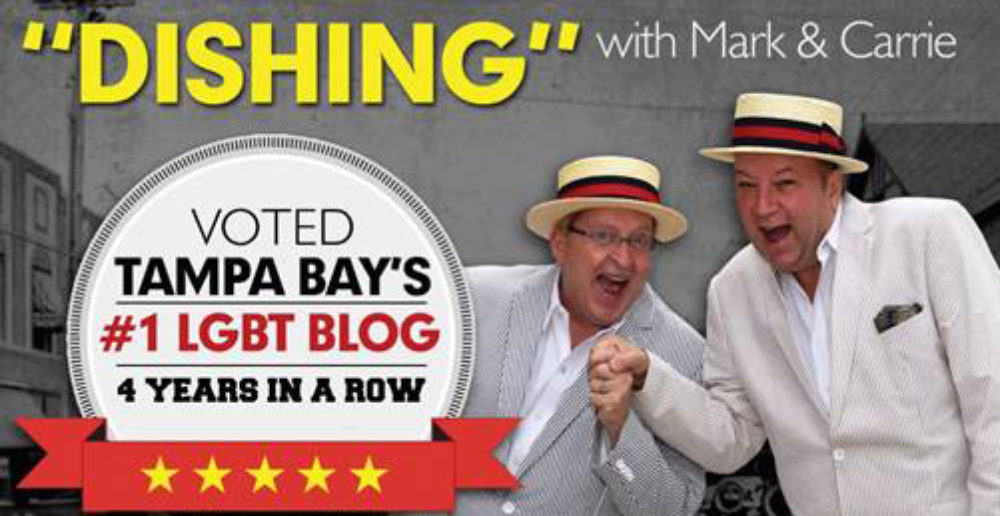Code words, hiding in plain sight helped gay bars in Tampa endure history of harassment
TAMPA — Mark Bias and Carrie West painted the rails of their pool table in the rainbow colors of the LGBTQ flag.
The colorful makeover honors the table’s history as a feature of Tampa’s first gay bar, the Knotty Pine.
Now, the married Ybor City couple are putting the table up for sale during an online auction Friday as they liquidate belongings they’ve accumulated during their time as leaders of the pride movement in Tampa.
Potential bidders can enter “North A Street” into the search bar at maxsold.com.
“This thing has seen all the changes,” said West, 67, noting that the pool table passed through six gay bars before the couple bought it 20 years ago from the KiKiKi 3 bar. “All these things have.”
ADVERTISEMENT
The auction items span a period of growing acceptance for gay people in American society, he said. Today, communities on both sides of Tampa Bay elect openly gay candidates, and this weekend, they host Pride parades.
“It’s unbelievable how open it is now,” West said.
A gay bar figures prominently in that timeline — Greenwich Village’s Stonewall Inn, where riots broke out 50 years ago when homosexuality was illegal and patrons lashed out against constant raids.
The history of Tampa’s own gay bars mirrors the changes nationwide.
The Knotty Pine opened in the 1940s on the corner of Polk and Morgan streets. When police entered the bar, those dancing would quickly switch from same-sex to opposite-sex partners.
In 1956, 26-year-old Carl DeLong Jr. was found beaten unconscious along Riverhills Drive in Tampa and died a month later. He was last seen alive at the Knotty Pine.
Police used the crime as a pretense to intensify their crackdown.
In July 1957, Tampa’s Jimmie White’s Tavern was raided.
“My orders came from the top,” an officer was quoted as saying in the Tampa Tribune. “We’re going to put a stop to this activity once and for all.”
ADVERTISEMENT
No one was charged, but 12 women dressed in “mannish clothing” were photographed and fingerprinted, according to the Tribune.
The LGBTQ community was also targeted by the John’s Committee established in 1956 by the Florida Legislature to root out what were deemed to be subversive activities. The committee was disbanded in 1965.
In 1993, details of the committee’s efforts were made public. The Tampa Bay Times reported that a local judge cruised gay bars in search of women to extort. They could either perform at a stag party or he would prosecute them.
Still, by the 1970s, gay bars had grown more common, said Manny Alvarez, 56, who in the early-2000s owned the gay-themed Streetcar Charlie’s restaurant in Ybor City.
“Kennedy Boulevard was the gay epicenter,” Alvarez said. “It had The Old Plantation and Rene’s Lounge.”
In Pinellas County, the Lighted Tree and Marilyn’s Closet were popular gay spots and Pass-a-Grille Beach was “very Key Westy gay,” he said.
On Sundays, the Old Plantation House — an upscale alternative to speakeasy-style gay bars — was the place to be, said Bobby Stoner, who was the DJ there.
“It was a very energetic,” said Stoner, 69. “People would come from St. Pete just to dance.”
But harassment continued, said Kim Bachschmid, 65, who in the late-1970s owned Kim’s Magic Fantasy Room in Tampa.
Bachschmid never experience harassment at her bar but police would visit Tampa’s Carousel to check patrons’ underwear, she said, and “if a woman was wearing boxers, she was arrested.”
In the late-1970s, arsonists targeted several Tampa gay bars. But they weren’t hate crimes, West and Bias said. Rather, many believed it was organized crime torching the competition.
One victim was Ybor City’s El Goya.
But the bar reopened on a grander scale, as El Goya Mall — offering five lounges including one with a country-western theme.
“The entrance had a giant lagoon with a huge waterfall,” said Alvarez, the former restaurant owner. “It was legendary.”
El Goya Mall attracted heterosexuals, too. One regular was former Tampa mayor Dick Greco, who would take out-of-town guests there to see the drag shows.
This mainstream status made it the safest place for LGBTQ people to frequent without fear of being outed.
“We parked five blocks away from other bars because we didn’t want to be seen,” Bachschmid said.
Bias and West moved to the area in 1980. Gay bar patrons, they said, whispered the code phrase, “Mrs. Kennedy is in the room,” when anyone spotted undercover cops, and, “Dorothy is on her way,” when a raid was coming.
“Jacqueline Kennedy was so was so pretty and glamorous,” Bias explained, “and, ‘Are you a friend of Dorothy?’ was a gay pickup line.”
Bias and West were regulars at Rene’s, popular for its pool and cabanas. Police would park around the corner and pull over patrons leaving the establishment.
“They asked, ‘Sir, do you know what type of bar that is?'” said Bias, 62.
They replied no, and said they were cousins.
“If we told them the truth we might have been arrested and interrogated,” West said.
In the late-1990s, the couple opened a store selling LGBTQ-themed tchotchkes, art and films in St. Petersburg’s nine-acre Suncoast Resort. The complex was heralded as a gay and lesbian convention center until it closed in 2007.
It was widely believed that police stopped their harassment of gay bars in the 1980s, West and Bias said.
But that’s not true, they said.
They believe it continued into the late-90s — under the guise of narcotics raids.
ADVERTISEMENT
“They weren’t there for drugs,” Bias said. “It was harassment.”
Contact Paul Guzzo at pguzzo@tampabay.com. Follow @PGuzzoTimes.

![The Knotty Pine north of downtown, dating back to the 1940s, was regarded as the first gay bar in Tampa. [Times] The Knotty Pine north of downtown, dating back to the 1940s, was regarded as the first gay bar in Tampa. [Times]](https://www.tampabay.com/storyimage/HI/20190619/ARTICLE/190619607/AR/0/AR-190619607.jpg&MaxW=1200&Q=66)